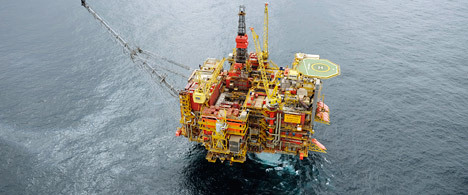
Statoil revealed some of the findings into serious gas leak incident, which injured five people, including two students.
The event unfolded at its one of its terminal on October 12. A total of five people were injured after being exposed to H2S gas (hydrogen sulphide) at the Sture terminal outside Bergen.
Two operators, one apprentice and two students on work placements, were exposed to H2S gas at the Sture terminal in connection with work on an H2S reactor.
“A 14-metre high concrete vessel, the H2S reactor works as a produced water and ballast water cleaning facility with a short vent pipe on the top. One of the five individuals was critically injured, one seriously injured and three individuals were slightly injured. All made a full recovery and are now back in normal routines at work and/or at school.” a statement read.
Executive vice president for Marketing, Midstream and Processing Jens Økland, added: “It is highly likely that the effort of the personnel at the Sture terminal helped prevent a more serious outcome of the incident. But the investigation shows that the safety of the employees was not adequately taken care of this October day. We take this very seriously, and it is crucial that we pursue the findings of this investigation report and use it to strengthen the safety work on the plants.”
The report highlighted “several root causes”.
The statement read: “Inadequate risk understanding, inadequate skills and emergency response management, in addition to failing barriers in connection with the inspection of the H2S reactor are key elements here. The report forms the basis for measures including: specific operational measures such as more use of portable gas detectors and improved operational procedures related to the H2S reactor, as well as general actions to help increase risk understanding among all employees and improve the quality of the safety work.”
Lars Rosenløv, Statoil’s senior vice president for onshore facilities, added: “In connection with this incident we acknowledge that we had not been able to empower the operations organisation at Sture to make the right risk assessments associated with the work on the H2S reactor. The conclusions in the report form the basis for both immediate initiatives and more long-term measures at Sture. This, in turn, will result in learning and sharing of experience with the rest of the company’s onshore facilities.”
Elsewhere, the operator conducted an investigation into a fire in a utility shaft on its Statfjord A platform.
The fire started in the seal oil of the loading pump transferring oil from the platform to the tanker. When the stop signal to the pump was activated, it led to fatigue fracture on the shaft inside the switch chamber where the power is connected/disconnected. The fire was extinguished by the sprinkler system.
“The investigation report states that the risk of escalation was small, and concludes that the incident did not involve a major-accident potential. There was furthermore no potential for personal injury related to the incident, however, it gives us valuable learning that we will apply in our work to prevent recurrence and strengthen safety on our installations,” said Øystein Arvid Håland, Statoil’s vice president for safety and sustainability of Development and Production Norway.
The reports have been submitted to the Petroleum Safety Authority Norway.
“The serious incidents that occurred this autumn are not satisfactory. It is imperative for us to carefully look into all aspects of the incidents to ensure that learning helps improve safety. The investigation reports will be systematically followed up with specific measures to further strengthen our safety work,” added Jannicke Nilsson, executive vice president and chief operating officer (COO).
“The two completed investigations do not prove any connections between our improvement work and the incidents. Nevertheless, we take signals of a demanding work situation due to many ongoing efficiency initiatives seriously. We evaluate this thoroughly, and follow up to ensure that the company’s improvement work strengthens both safe and efficient operation.”
The Sture and Statfjord A incidents are also being investigated by the Petroleum Safety Authority Norway and the police.
Recommended for you
